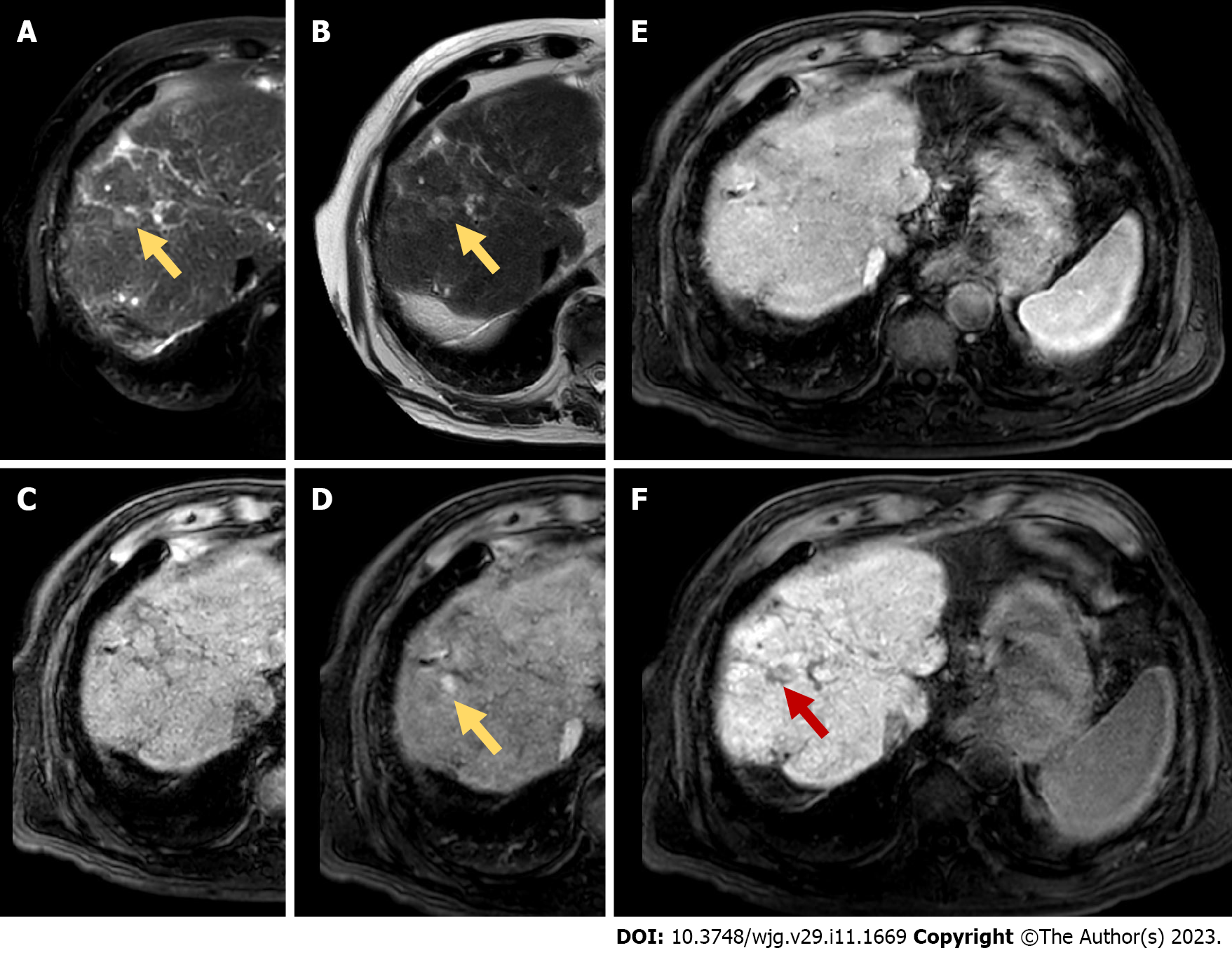Copyright
©The Author(s) 2023.
World J Gastroenterol. Mar 21, 2023; 29(11): 1669-1684
Published online Mar 21, 2023. doi: 10.3748/wjg.v29.i11.1669
Published online Mar 21, 2023. doi: 10.3748/wjg.v29.i11.1669
Figure 3 Magnetic resonance imaging follow-up study with GD-EOB-DTPA for assessment of treatment response (after transarterial chemoembolization and radiofrequency ablation).
A and B: A 70-year-old female underwent conventional transarterial chemoembolization-radiofrequency ablation of a hepatocellular carcinoma lesion located in the VIII hepatic segment. Eighteen months after treatment, confluent areas of hyperintense signal on T2 weighted imaging, with and without fat saturation, represented fibrosis. In this context a small slightly hyperintense nodular lesion was seen on T2 weighted imaging (T2 and T2 fs, yellow arrows); C-F: This lesion was isointense to the liver parenchyma in the unenhanced phase (C), with a non-peripheral wash-in appearance during the arterial phase (D), isointense during the portal venous phase (E), and hypointense during the hepatobiliary phase acquired after 20 min of Gd-EOB-DTPA administration (F). The final diagnosis was recurrent hepatocellular carcinoma after transarterial chemoembolization-radiofrequency ablation.
- Citation: Ippolito D, Maino C, Gatti M, Marra P, Faletti R, Cortese F, Inchingolo R, Sironi S. Radiological findings in non-surgical recurrent hepatocellular carcinoma: From locoregional treatments to immunotherapy. World J Gastroenterol 2023; 29(11): 1669-1684
- URL: https://www.wjgnet.com/1007-9327/full/v29/i11/1669.htm
- DOI: https://dx.doi.org/10.3748/wjg.v29.i11.1669









